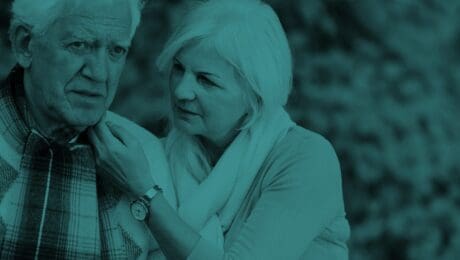CHOLESTEROL REDUCING RECIPES
- Published in IN HOME CARE
HOW TO HELP SENIORS THROUGHT SUNDOWNERS SYNDROME
Mood changes are common for aging adults and often accompany health problems. Seniors with memory-related illnesses like dementia or Alzheimer’s disease are especially prone to challenges resulting from mood changes. (NCBI)
About Sundowners Syndrome
One common mood issue among seniors with memory-related illnesses is sundowners syndrome.
Sundowners Syndrome is:
- Not a disease, but a common behavior pattern noticed by medical staff and caregivers
- A change in mood occurring in the late afternoon, evening, or night
- Spotted by symptoms of stress, anxiety, restlessness, confusion, and/or aggression
- Most common among seniors with dementia or Alzheimer’s disease
- Worsened by poor lighting, fatigue, or a disrupted schedule
(Senior Living)
HOW TO HELP SENIORS THROUGH SUNDOWNERS SYNDROME
C A R E G I V E R S
Triggers of Sundowners Syndrome
To help minimize triggers, avoid:
- Dim or changing lighting
- Disruptions to routines
- Unhealthy diets
- Exciting, energizing activities later in the day
- Loud noises and music
- Argumentative or commanding tones
(Medical News Today)
https://www.ncbi.nlm.nih.gov/pmc/articles/PMC5003566/
https://www.seniorliving.org/health/sundown-syndrome/
https://www.medicalnewstoday.com/articles/314685.php
HOW TO HELP SENIORS THROUGH SUNDOWNERS SYNDROME
Home Care Tip
Mental Health Among Seniors
Careful and consistent communication between caregivers is important for seniors who face sundowners syndrome. This ensures routines are kept, which can alleviate symptoms.
According to the World Health Organization, about 15% of seniors live with mental disorders. Some of the top mental challenges seniors face include:
- Depression
- Anxiety
- Dementia
- Alzheimer’s Disease
(WHO)
C A R E G I V E R S
Sundowners Syndrome
Tips for Managing Sundowners Syndrome
While most people seem to calm down later in the day, seniors with memory-related issues experiencing sundowners syndrome tend to get more active. There are several ways to help seniors through this challenge.
Support Sleep
Since disruptions to schedules and lack of sleep can exacerbate sundowners syndrome, it is important to support seniors getting good sleep. A solid routine and supplements like melatonin can help.
Use Lighting
Dimming lights seem to be one of the triggers of sundowners syndrome, so it can be helpful to plan to turn more lights on later in the day and keep them on until bedtime. Closing the blinds while lights are on can also minimize symptoms.
Be a Calming Presence
To help seniors’ moods stabilize, caregivers should be a calming presence. Limit alcohol intake and activity later in the day. Remain calm if mood swings begin. Remind seniors what time it is and what their schedule holds. This helps seniors to relax despite feelings of confusion or anxiety they may be facing.
(WebMD)
http://www.clearcareonline.com
https://www.who.int/news-room/fact-sheets/detail/mental-health-of-older-adults
https://www.webmd.com/alzheimers/guide/manage-sundowning#2
- Published in IN HOME CARE
KEEPING SENIORS SAFE ON THE ROAD
- Published in IN HOME CARE
PROSTATE HEALTH FOR AGING ADULTS

PROSTATE HEALTH
FOR AGING ADULTS
Prostate Health Awareness
September is prostate awareness month. [cite: 1, 2] Spreading awareness of this disease is important, especially among seniors. Men over age 65 account for nearly 60% of all prostate cancer diagnoses. [cite: 2, 3] (Prostate Cancer Foundation: Patient Guide) [cite: 3]
Prostate Cancer Prevention
About Prostate Health
Men have prostates, which are small glands located near the bladder. [cite: 3, 4] Prostates can develop problems like infections or inflammation. [cite: 4] Cancer cells can also form in the prostate, which can develop into tumors. [cite: 4, 5] There are more than 20 specific forms of prostate cancer. [cite: 5]
Symptoms of Prostate Cancer
Unfortunately, prostate cancer doesn’t usually have symptoms until it is in an advanced stage. [cite: 5, 6] That’s why screening for prostate cancer is so important. [cite: 6]
Screening for Prostate Cancer
There are two main options for screening for prostate cancer. [cite: 6, 7] Seniors can receive a blood test, which is called a prostate-specific antigen (PSA) test. [cite: 7] A physical rectal exam may also be conducted. [cite: 7, 8] If a doctor suspects a patient has prostate cancer, a biopsy is almost always involved in the diagnosis. [cite: 8, 9] Treatment of Prostate Cancer
The most common treatments for prostate cancer include radiation, surgery to remove tumors, and drug-based therapies. [cite: 9, 10] (Prostate Cancer Foundation: Patient Guide) [cite: 10]
No studies to date have definitively proven a prostate cancer prevention strategy. [cite: 10, 11, 12] However, some prevention strategies are believed to reduce the risk of cancer overall, and may improve the body’s ability to fight any kind of cancer. [cite: 11, 12] Try:
- Eating a healthy, anti-inflammatory diet
- Maintaining a healthy weight
- Staying active
- Attending regularly scheduled doctor appointments
(Mayo Clinic) [cite: 12]
Why Screening for Prostate Cancer is Vital
The obvious reason for screening older men for cancer is that early detection increases the odds of survival. [cite: 13, 14] There are other reasons for getting screened, though:
- Men with prostate cancer may have genes that predispose both their sons and daughters to forms of cancer. [cite: 14, 15]
- Data about prostate cancer, even if it is non-aggressive, can be used by researchers to prevent and treat all cancers. [cite: 15, 16]
- Early detection can reduce the intensity of treatment required, as well as the side effects. [cite: 16, 17]
- Doctors may be able to begin with the less invasive blood test if a senior’s risk level is low. [cite: 17, 18]
(Prostate Cancer Foundation) [cite: 18]
Risk Factors for Prostate Cancer
Men should be certain to get screened for prostate cancer if they:
- Are over 65
- Have a family history of cancer
- Have genetic factors predisposing cancer
- Are African American
- Have an unhealthy lifestyle and poor dietary habits
Home Care Tip
For many men, having to experience a rectal exam is the main reason for avoiding prostate cancer screening. [cite: 18, 19] Remind senior men that their health (and genes) can affect their loved ones. [cite: 19] Any temporary discomfort is worth it.
- Published in IN HOME CARE
UNIFYING SENIORS CARE TEAM
- Published in IN HOME CARE
AGING ADULTS AND DIABETES
AGING ADULTS AND DIABETES:
WHAT YOU NEED TO KNOW
Managing Diabetes as Part of Senior Care
Diabetes is a disease that affects the way the body processes food, especially sugar. Many seniors have a form of diabetes, which can become serious if it isn’t managed. Learn basic facts about diabetes prevention and management.
(CDC)
Types of Diabetes
There are two types of diabetes, type 1 and type 2. While type 2 is much more common, especially among aging adults, type 1 diabetes can also affect seniors.
Type 1 Diabetes
- Chronic
- Unpreventable
- Diagnosed with a blood test
- Checked on through regular blood sugar tests
- May require regular insulin injections or a pump
Type 2 Diabetes
- Chronic
- Sometimes preventable
- Diagnosed with a blood test
- Checked on through periodic blood sugar tests
- Often manageable by lifestyle and diet changes; may require medication
For seniors with type 1 diabetes, care should continue as normal. Caregivers should pay special attention for symptoms of hypoglycemia and take care to help seniors manage their disease as common parts of aging, like memory loss or lack of routine, increase the difficulty of maintaining a healthy state.
About Type 2 Diabetes and Seniors
Symptoms:
- Feeling tired
- Being unusually hungry or thirsty
- Accidental weight loss
- Frequent urination
- Blurred vision
- Skin infections
- Healing slowly from cuts and bruises
Medical Tests:
Blood tests can diagnose diabetes and sometimes even show signs of prediabetes. Seniors should be screened for diabetes at annual appointments and ask a doctor for blood tests if symptoms develop.
Type 2 Diabetes Management:
- See a dietician for help with meal planning for a healthier diet
- Get regular exercise (personal training is often discounted for seniors)
- Track glucose levels with blood tests as directed by a doctor
- Lose weight if obesity is contributing to the disease
- Choose a healthy lifestyle to decrease risks associated with diabetes like stroke (stop smoking, get more sleep, attend annual physical exams)
In some cases, medication is part of type 2 diabetes management. Ask a doctor if any medications could be helpful in preventing type 2 diabetes from worsening. Be sure a senior’s caregiving team is in sync concerning diabetes care to keep blood sugar levels healthy.
Home Care Tip
Being diagnosed with type 2 diabetes can be discouraging for seniors. The risks of worsening diabetes are serious: people sometimes require amputations. Be supportive and understanding. Find a support group or classes about type 2 diabetes to help seniors stay positive and make healthy choices.
Type 2 Diabetes Prevention
Many people can lower their risk of type 2 diabetes by making lifestyle changes like:
- Losing weight
- Getting regular exercise
- Eating a healthy diet
- Taking prescriptions as recommended by a doctor
Seniors should take prevention very seriously if they are told they have prediabetes, which predisposes them to develop the disease.
Type 2 Diabetes Risk Factors
Seniors are at greater risk of type 2 diabetes if they:
- Are over 65 years old
- Are overweight
- Have a family history of diabetes
- Are sedentary
- Had gestational diabetes while pregnant
*ClearCare
- Published in IN HOME CARE
PREVENTATIVE HEALTH STRATEGIES FOR SENIORS
- Published in IN HOME CARE
HELPING SENIORS CREATE AN EMERGENCY CONTACT PLAN
- Published in ALZHEIMER, CAREGIVERS, DEMENTIA, IN HOME CARE











